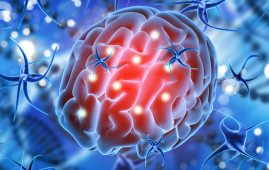

According to new research, the immune system’s ability to respond to spinal-cord injuries declines with age, and it finds potential avenues to increase that response and help patients heal. The findings shed light on how the immune system reacts to spinal injury treatment and why that response becomes dulled over time. It also demonstrates that the membranes surrounding the spinal cord play a key role in mounting an immune response to damage. With this knowledge, clinicians may one day be able to boost the body’s immune response to enhance patient outcomes, particularly in the elderly.
“Our findings suggest in aging, there is an impairment in how the immune response is initiated and resolved, compared to young people,” said researcher Andrea Francesca M. Salvador, who just received her doctorate from the University of Virginia School of Medicine. “Hopefully, our results can help identify points of intervention and druggable targets that can improve recovery and address long-term consequences of injury, such as pain.”
The researchers have published their findings in the journal Neuron.
Recognizing Spinal Cord Damage
Spinal cord injuries can have terrible long-term consequences. Depending on the severity and location of the injury, patients may be unable to move or regulate their bowels. They are capable of causing pain, sexual dysfunction, and uncontrollable spasms. Understanding how the body reacts to injury is critical for developing improved spinal injury treatment methods.
The findings are the latest from Jonathan Kipnis’ group, who made a surprising discovery while at UVA in 2015 that the brain was linked to the immune system via veins previously unknown. Previously, it was thought that the brain was effectively sealed off from the immune system.
The discovery of vessels in the brain membrane, or meninges, altered textbooks and ushered in a new era of neurological research. Today, “neuroimmunology,” or the study of the nervous system’s link to the immune system, is one of the most exciting areas of neuroscience research, with the potential to alter our understanding of the brain and our ability to treat a wide range of neurological illnesses.
Salvador, Kipnis, and colleagues discovered that the meninges surrounding the spinal cord play an important role in the immunological response to spinal-cord damage in their latest study. They discovered that meningeal lymphatic “patches” occur above the location of spinal-cord injury, which were previously unknown.
More research is needed to determine exactly what these structures perform, but their creation suggests that the spinal-cord meninges play a significant role in the immunological response to injury.
Salvador and her colleagues also investigated how immune cells react to spinal cord damage. They discovered that the reaction was considerably stronger in young lab mice than in older mice, implying that scientists may be able to target certain immune cells to boost healing after spinal cord injury.
The findings point to the spinal-cord meninges and their connections with other central nervous system components as potential areas for researchers to investigate.
“This is an exciting finding and one which may indeed lead to new therapeutic approaches for spinal cord-injury patients,” said Kipnis, now a professor at Washington University School of Medicine in St. Louis and director of its Brain Immunology and Glia Center (BIG Center). “We are now collaborating with clinicians in a hope to better understand what is happening in human patients and how our findings could be translated to make a real difference.”
more recommended stories
 Atrial Fibrillation in Young Adults: Increased Heart Failure and Stroke Risk
Atrial Fibrillation in Young Adults: Increased Heart Failure and Stroke RiskIn a recent study published in.
 Neurodegeneration Linked to Fibrin in Brain Injury
Neurodegeneration Linked to Fibrin in Brain InjuryThe health results for the approximately.
 DELiVR: Advancing Brain Cell Mapping with AI and VR
DELiVR: Advancing Brain Cell Mapping with AI and VRDELiVR is a novel AI-based method.
 Retinal Neurodegeneration in Parkinson’s Disease
Retinal Neurodegeneration in Parkinson’s DiseaseBy measuring the thickness of the.
 Epilepsy Seizures: Role of Astrocytes in Neural Hyperactivity
Epilepsy Seizures: Role of Astrocytes in Neural HyperactivityRoughly 1% of people experience epilepsy.
 Role of Engineered Peptides in Cancer Immunotherapy
Role of Engineered Peptides in Cancer ImmunotherapyIn a recent publication in Nature.
 CRISPR-Cas9 Gene Therapy for Prostate Cancer
CRISPR-Cas9 Gene Therapy for Prostate CancerIn their preclinical model, the researchers.
 Epilepsy Surgery: Rare Hemorrhagic Complications Study
Epilepsy Surgery: Rare Hemorrhagic Complications StudyFollowing cranial Epilepsy Surgery, hemorrhagic complications.
 Pediatric Epilepsy – Mental Health Interventions Unveiled
Pediatric Epilepsy – Mental Health Interventions UnveiledMental health challenges frequently manifest in.
 Neoadjuvant Chemotherapy Boosts Ovarian Cancer
Neoadjuvant Chemotherapy Boosts Ovarian CancerDuring the COVID-19 pandemic, US women.

Leave a Comment